-
 Bitcoin
Bitcoin $102,881.1623
-0.60% -
 Ethereum
Ethereum $2,292.8040
-5.48% -
 Tether USDt
Tether USDt $1.0004
0.02% -
 XRP
XRP $2.0869
-2.02% -
 BNB
BNB $634.6039
-1.35% -
 Solana
Solana $136.1527
-3.00% -
 USDC
USDC $1.0000
0.01% -
 TRON
TRON $0.2728
-0.45% -
 Dogecoin
Dogecoin $0.1572
-3.70% -
 Cardano
Cardano $0.5567
-5.07% -
 Hyperliquid
Hyperliquid $34.3100
-1.20% -
 Bitcoin Cash
Bitcoin Cash $462.5691
-2.33% -
 Sui
Sui $2.5907
-5.21% -
 UNUS SED LEO
UNUS SED LEO $8.9752
1.13% -
 Chainlink
Chainlink $12.0549
-4.93% -
 Stellar
Stellar $0.2381
-2.36% -
 Avalanche
Avalanche $16.9613
-3.47% -
 Toncoin
Toncoin $2.8682
-2.36% -
 Shiba Inu
Shiba Inu $0.0...01095
-3.70% -
 Litecoin
Litecoin $81.8871
-2.43% -
 Hedera
Hedera $0.1377
-5.36% -
 Monero
Monero $310.8640
-0.68% -
 Ethena USDe
Ethena USDe $1.0007
0.03% -
 Dai
Dai $1.0001
0.03% -
 Polkadot
Polkadot $3.3103
-5.19% -
 Bitget Token
Bitget Token $4.2168
-1.95% -
 Uniswap
Uniswap $6.4643
-8.14% -
 Pepe
Pepe $0.0...09329
-7.42% -
 Pi
Pi $0.5111
-5.23% -
 Aave
Aave $235.2340
-5.77%
Why doesn't Phantom balance update? Tips for syncing nodes and refreshing data
Phantom wallet users may face balance update issues due to network congestion, node syncing problems, or data refresh delays; try refreshing data or switching nodes to resolve.
May 18, 2025 at 11:36 pm
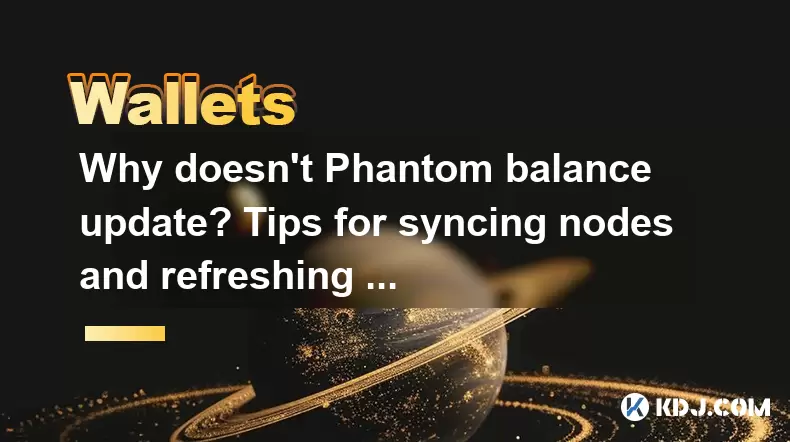
Introduction to Phantom Wallet
Phantom is a popular non-custodial wallet used primarily for interacting with the Solana blockchain. Users often rely on Phantom to manage their cryptocurrencies, including Solana (SOL) and various tokens built on the Solana network. However, users sometimes encounter issues where their balance does not update in real-time. This article will explore the reasons behind this issue and provide detailed tips on syncing nodes and refreshing data to resolve it.
Understanding Balance Update Issues
When users notice that their Phantom wallet balance does not update, it can be due to several factors. The most common reasons include network congestion, node syncing problems, or issues with the wallet's data refresh mechanism. Understanding these factors is crucial for troubleshooting and resolving the issue effectively.
Network Congestion and Its Impact
Network congestion on the Solana blockchain can significantly affect the speed at which transactions are processed and reflected in wallets like Phantom. During periods of high transaction volume, the network may take longer to confirm transactions, leading to delays in balance updates. Users can check the current status of the Solana network on various blockchain explorers to determine if congestion is the cause of their issue.
Node Syncing Problems
Phantom wallet relies on nodes to fetch and update transaction data. If the nodes that Phantom connects to are not fully synced with the Solana blockchain, it can result in outdated or incorrect balance information. To address this, users can try connecting to different nodes or waiting for the current node to catch up with the blockchain.
Refreshing Data in Phantom Wallet
Phantom wallet includes a feature to manually refresh the data displayed in the wallet. This can be a quick fix for balance update issues. To refresh the data in Phantom, follow these steps:
- Open the Phantom wallet on your device.
- Click on the settings icon located at the top right corner of the wallet interface.
- Scroll down to the 'Refresh Data' option and click on it.
- Wait for the wallet to refresh and check if the balance updates correctly.
Tips for Syncing Nodes
Syncing nodes effectively can help resolve balance update issues in Phantom wallet. Here are some detailed tips to ensure your nodes are properly synced:
- Check Node Status: Use a blockchain explorer to check the status of the node you are connected to. If the node is lagging behind the blockchain, consider switching to a different node.
- Switch Nodes: Phantom allows users to switch between different nodes. To do this, go to the settings in Phantom, find the 'Network' option, and select a different node from the list provided.
- Restart the Wallet: Sometimes, simply restarting the Phantom wallet can help it connect to a more up-to-date node.
- Use a VPN: If you suspect that your internet connection is causing issues with node syncing, try using a VPN to connect to a different server, which might provide a better connection to the Solana nodes.
Additional Troubleshooting Steps
If the above steps do not resolve the balance update issue, consider the following additional troubleshooting steps:
- Clear Cache and Data: On mobile devices, clearing the cache and data of the Phantom app can sometimes resolve persistent issues. Go to your device's settings, find the Phantom app, and clear its cache and data.
- Reinstall the Wallet: Uninstalling and reinstalling the Phantom wallet can help resolve issues related to corrupted data or outdated app versions.
- Check for Updates: Ensure that you are using the latest version of the Phantom wallet. Developers often release updates to fix bugs and improve performance, which can help resolve balance update issues.
Frequently Asked Questions
Q: Can I use Phantom wallet on multiple devices simultaneously?
A: Yes, you can use Phantom wallet on multiple devices as long as you have the same recovery phrase. However, ensure that you keep your recovery phrase secure and do not share it with anyone.
Q: How often should I refresh my Phantom wallet data?
A: There is no set frequency for refreshing your Phantom wallet data. You should refresh it whenever you notice that your balance is not updating correctly or after making a transaction that does not appear in your wallet immediately.
Q: Is it safe to switch nodes in Phantom wallet?
A: Yes, it is safe to switch nodes in Phantom wallet. The wallet connects to different nodes to fetch data, and switching nodes can help resolve syncing issues without compromising the security of your wallet.
Q: What should I do if my Phantom wallet balance still does not update after trying all the suggested steps?
A: If your Phantom wallet balance still does not update after trying all the suggested steps, consider reaching out to the Phantom support team for further assistance. They can provide more specific guidance based on your situation.
Disclaimer:info@kdj.com
The information provided is not trading advice. kdj.com does not assume any responsibility for any investments made based on the information provided in this article. Cryptocurrencies are highly volatile and it is highly recommended that you invest with caution after thorough research!
If you believe that the content used on this website infringes your copyright, please contact us immediately (info@kdj.com) and we will delete it promptly.
- Bitcoin Dominance, Mideast Conflict, and Altcoin Pressure: A Crypto Conundrum
- 2025-06-22 18:25:12
- Bitcoin, Stocks, and Gold: Echoes of the Past, Glimpses of the Future
- 2025-06-22 18:25:12
- BTC to $330K? Decoding the Bitcoin Model That's Turning Heads
- 2025-06-22 16:25:13
- SUI Price Weekly Pattern: Will It Snap Upward?
- 2025-06-22 16:25:13
- Meme Coin Mania: Can Neo Pepe Overtake Shiba Inu in the Presale Frenzy?
- 2025-06-22 16:45:13
- Bitcoin, War Fears, and Hedge Funds: A Contrarian's Delight?
- 2025-06-22 16:45:13
Related knowledge
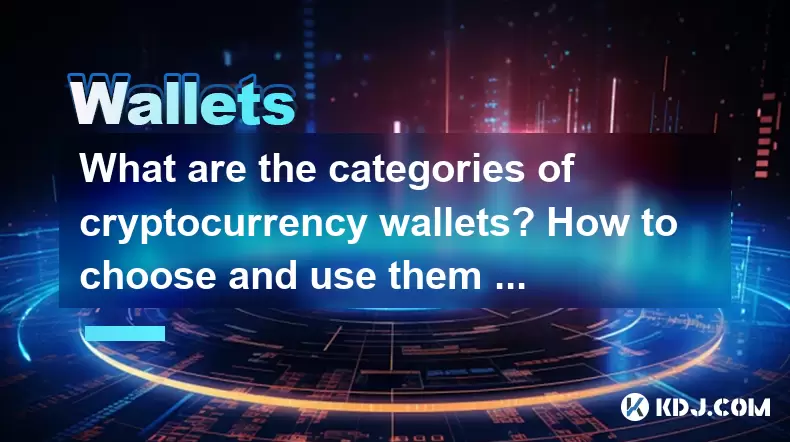
What are the categories of cryptocurrency wallets? How to choose and use them safely?
Jun 21,2025 at 10:42pm
Understanding Cryptocurrency WalletsCryptocurrency wallets are essential tools for anyone involved in the digital asset ecosystem. They allow users to store, send, and receive cryptocurrencies securely. Unlike traditional wallets that hold physical money, crypto wallets manage cryptographic keys—private and public—which interact with blockchain networks...
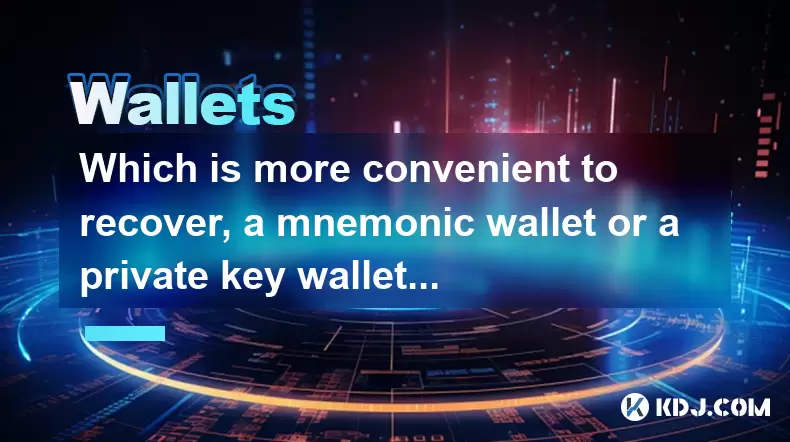
Which is more convenient to recover, a mnemonic wallet or a private key wallet? Will security be compromised?
Jun 20,2025 at 06:36am
Understanding Mnemonic Wallets and Private Key WalletsIn the world of cryptocurrency, wallet recovery is a crucial aspect that users must understand before storing digital assets. Two popular methods for securing and recovering wallets are mnemonic phrases and private keys. Both serve as gateways to access funds, but they differ significantly in terms o...
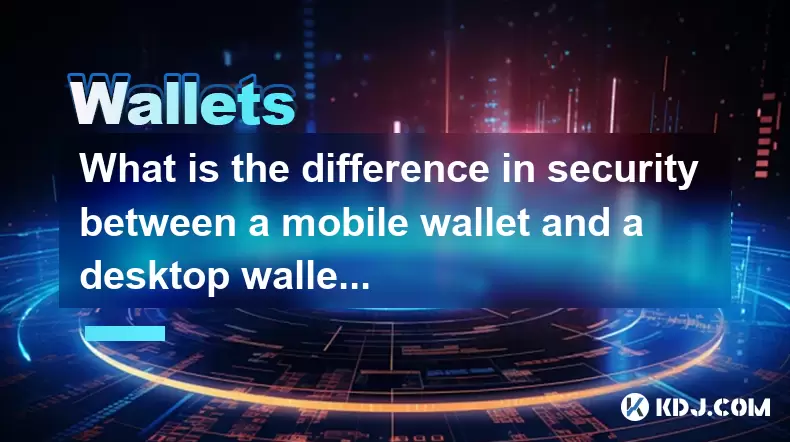
What is the difference in security between a mobile wallet and a desktop wallet?
Jun 22,2025 at 12:35pm
Understanding the Security Aspects of Mobile WalletsMobile wallets are digital wallets designed to run on smartphones, allowing users to store, send, and receive cryptocurrencies conveniently. The security of mobile wallets largely depends on how well the device is protected from malware, phishing attacks, and unauthorized access. One key feature of mob...

How is a multi-signature wallet safer than a single-signature wallet?
Jun 21,2025 at 07:56pm
Understanding Signature Mechanisms in Cryptocurrency WalletsIn the world of cryptocurrency, securing digital assets is paramount. One of the core aspects of this security lies in the signature mechanism used by wallets. A single-signature wallet requires only one private key to authorize a transaction. This means that if an attacker gains access to that...
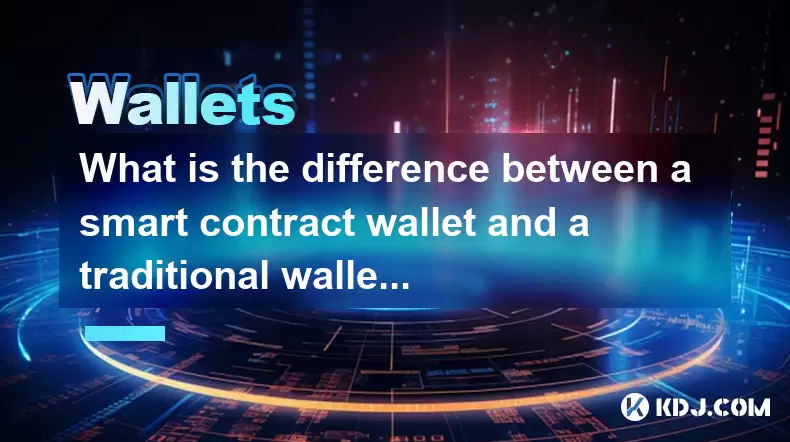
What is the difference between a smart contract wallet and a traditional wallet? In which scenarios must it be used?
Jun 21,2025 at 10:28am
Understanding Smart Contract Wallets and Traditional WalletsIn the cryptocurrency ecosystem, wallets are essential tools for managing digital assets. However, not all wallets operate in the same way. Two primary types of crypto wallets exist: smart contract wallets and traditional wallets. Each has distinct characteristics that make them suitable for sp...

How do observation wallets and signature wallets work together? What application scenarios are suitable?
Jun 20,2025 at 03:56pm
Understanding Observation Wallets and Signature WalletsIn the world of cryptocurrency, managing digital assets securely is crucial. Two types of wallets — observation wallets and signature wallets — play distinct roles in this process. An observation wallet allows users to monitor blockchain activity without holding private keys, meaning it cannot initi...

What are the categories of cryptocurrency wallets? How to choose and use them safely?
Jun 21,2025 at 10:42pm
Understanding Cryptocurrency WalletsCryptocurrency wallets are essential tools for anyone involved in the digital asset ecosystem. They allow users to store, send, and receive cryptocurrencies securely. Unlike traditional wallets that hold physical money, crypto wallets manage cryptographic keys—private and public—which interact with blockchain networks...

Which is more convenient to recover, a mnemonic wallet or a private key wallet? Will security be compromised?
Jun 20,2025 at 06:36am
Understanding Mnemonic Wallets and Private Key WalletsIn the world of cryptocurrency, wallet recovery is a crucial aspect that users must understand before storing digital assets. Two popular methods for securing and recovering wallets are mnemonic phrases and private keys. Both serve as gateways to access funds, but they differ significantly in terms o...

What is the difference in security between a mobile wallet and a desktop wallet?
Jun 22,2025 at 12:35pm
Understanding the Security Aspects of Mobile WalletsMobile wallets are digital wallets designed to run on smartphones, allowing users to store, send, and receive cryptocurrencies conveniently. The security of mobile wallets largely depends on how well the device is protected from malware, phishing attacks, and unauthorized access. One key feature of mob...

How is a multi-signature wallet safer than a single-signature wallet?
Jun 21,2025 at 07:56pm
Understanding Signature Mechanisms in Cryptocurrency WalletsIn the world of cryptocurrency, securing digital assets is paramount. One of the core aspects of this security lies in the signature mechanism used by wallets. A single-signature wallet requires only one private key to authorize a transaction. This means that if an attacker gains access to that...

What is the difference between a smart contract wallet and a traditional wallet? In which scenarios must it be used?
Jun 21,2025 at 10:28am
Understanding Smart Contract Wallets and Traditional WalletsIn the cryptocurrency ecosystem, wallets are essential tools for managing digital assets. However, not all wallets operate in the same way. Two primary types of crypto wallets exist: smart contract wallets and traditional wallets. Each has distinct characteristics that make them suitable for sp...

How do observation wallets and signature wallets work together? What application scenarios are suitable?
Jun 20,2025 at 03:56pm
Understanding Observation Wallets and Signature WalletsIn the world of cryptocurrency, managing digital assets securely is crucial. Two types of wallets — observation wallets and signature wallets — play distinct roles in this process. An observation wallet allows users to monitor blockchain activity without holding private keys, meaning it cannot initi...
See all articles
























































































